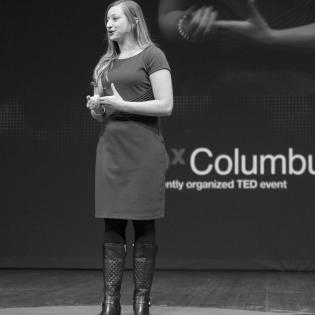Power and Potential to Make a Difference
Young people are making a difference for the issues they care about in big and small ways every day. Learners read stories of young people who are taking action through philanthropy and discuss the attributes of youth philanthropists. They reflect on their own power and potential to make a difference.
The learner will:
- identify the traits of individuals who take action for the common good.
- Reflect on their own power and potential to make a difference.
- a variety of stories about young people who make a difference: Youth Service America's Everyday Young Heroes or The Giraffe Heroes Project at www.giraffe.org or Random Acts of Kindness or Learning to Give's stories of youth action
- Youth Service America's Everyday Young Heroes
- The Giraffe Heroes Project at www.giraffe.org
- Random Acts of Kindness
- Learning to Give's stories of youth action
Instructions
Anticipatory Set:
Ask the young people to tell their own stories of taking action to address a need in the community, such as volunteering or raising money for a nonprofit. Share the website links above that include stories of youth sharing their time, passion, and voice to address a need they saw. Give them a few minutes to read and prepare to tell the others about the story that inspired them and why.
Each individual tells about the youth project they read about, sharing what the youth did and why. They may also tell what need they addressed and what difference it made for the giver and the issue.
Define philanthropy as giving time, talent or treasure, and taking action for the sake of another or for the common good.
As a model of what they will do in groups, draw an outline of a person, like a gingerbread person. Tell the participants that they will work in groups to describe a young person who generously takes action for the good of all. They will write words that describes how the person thinks and plans by the head of the outline (write that on your example). They write their emotional strenghts by the heart. They write the actions they take by the hands. By the feet they describe where young people are headed because of philanthropy.
They work in groups of 3-5 on filling in on their outline the philantropic traits of a young person for about 10-15 minutes.
When all the groups have finished, ask each to describe their philanthropic youth to the whole group.
Reflect together on what they have learned about the power that an individual has to use time, talent, or treasure to make changes for the common good. Challenge them to think about the power and potential they have to make a difference, and how they could focus that power through a special interest they may have. For example: someone interested in sports could volunteer to coach a children’s recreational team, someone interested in animals could join in a walk-a-thon to raise money for the humane society.
Philanthropy Framework
-
Strand PHIL.I Definitions of Philanthropy
-
Standard DP 01. Define Philanthropy
-
Benchmark HS.1 Define philanthropy to include giving and sharing; volunteering; and private individual action intended for the common good. Explain how a volunteer individual/group can act for the common good.
-
Benchmark HS.2 Identify and discuss examples of philanthropy and charity in modern culture.
-
-
